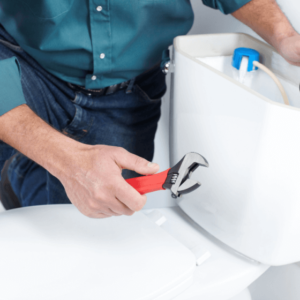Installing a paver patio for outdoor entertaining and family R&R is a great addition to any backyard. Paver stones are available in a number of colors, shapes and sizes to complement your home’s exterior. Also, adding solar lights around your paver patio can illuminate and showcase your outdoor space, while adding a touch of security at night.
Step 1: Measure & Plan
The first step of installing a paver patio is to treat your backyard as a blank canvas and imagine how you want the patio to look and fit in the space you have. Using a pencil and paper, create a sketch of the shape and estimated size of the patio, keeping in mind also the type of paver stones and pattern you want. Note any existing structures that can be worked into the patio or ones that might hinder your plan, such as your home itself, fences, trees, etc.
Go outside and measure the area with a tape measure. Outline an area approximately 12″ larger than you wish the finished patio to be. Mark the dimensions with stakes and landscaping twine.
Safety Alert!
Contact your utility company to locate and mark any underground pipes and wires before you start digging.
Step 2: Prepare the Area
You must remove the grass from the area you plan to install a paver patio. Depending on the amount of grass that needs to be removed, you can either use a shovel or a power tiller to remove grass and the top layer of sod in the staked out area. Use a shovel to remove the soil in the area to a depth of about 8″. This allows for a 4” gravel base, a 1″ layer of sand and then 3″ for the pavers. Use a tamper or rent a plate compactor to tightly pack the soil. Loose soil and other layers underneath your patio can make pavers shift, crack or settle unevenly.
Step 3: Install Base Layers of Paver Patio
A layer of gravel provides support and ensures proper drainage of the paver patio. Fill the space with half of the needed gravel amount and spread it using a level-headed rake. Compact the gravel with the tamper or plate compactor before adding the rest. When you can walk on a compacted layer without causing an indentation, it’s time to add the next layer. Spread the next layer of gravel evenly and then compact it. Use a level to make sure it’s flat.
Helpful Tip
Moisten the gravel lightly with water from a garden hose to make compacting easier.
Add a 1″ layer of coarse sand next, spreading it and smoothing it out with the level-headed rake. Use a scrap board or piece of lumber, such as a 2 x 4 to further smooth it and make it as uniform as possible. Don’t step on, compact or wet the sand after you’ve smoothed it out with the board.
Helpful Tip
Lightly moisten the sand for easier spreading and smoothing. Don’t saturate it.
Step 4: Lay Paver Stones
This portion of your paver patio installation allows you to get your creative juices flowing. Begin laying the stones in the pattern of your choice directly in the center of the area, working outwards. Leave about 1/8″ space in between each of the stones. Be sure to set the pavers gently onto the sand without sliding, twisting or pushing. As you work, you can stand on the pavers you’ve already placed, but make sure not to step on or disturb the sand bed.
If your pattern has curved edges, or the final row doesn’t fit evenly, you can cut the pavers with a diamond-blade wet saw, paver splitter or a hammer and chisel.
Safety Alert!
When cutting pavers, always wear safety glasses and gloves for protection.
Step 5: Install Paver Patio Edging
Cut plastic landscaping edging to fit the size and shape of your patio area and secure it at the outside edge of the paver patio with 12″ spikes. The edging helps hold the patio in place over time and also gives it a functional and attractive border.
Step 6: Fill in the Cracks
After laying all the paver stones, sweep away any debris with a broom. Then spread dry sand over the surface of the pavers to lock the pavers firmly in place. Use the broom again to sweep the sand over and between the pavers, then compact the area with the plate compactor to fill and pack the crevices. Make two passes with the compactor, in opposite directions. Then, add a final layer of sand and sweep it into the joints. Repeat this process several times over the next few days, adding more sand to compensate for settling, wind and rain.
You can seal the pavers to protect them from stain and enhance their rich colors using an exterior latex masonry sealer. Apply the sealant using a roller applicator and extension pole. Let the sealant dry for the manufacturer’s recommended amount of time before using the patio.
Step 7: Solar Light Installation
Install energy-efficient, maintenance-free solar lights to show off your handiwork when the sun goes down. These lights are wireless, easy to install and because they absorb energy from the sun, require no electricity. Most solar lights even have built-in darkness sensors so you don’t have to turn them on or off. Determine how many lights you need by measuring out equidistant spaces, using a tape measure, between the spots where you want each light to go. Mark these locations with stakes or landscaping paint. Assemble the lights according to manufacturer’s instructions. Start at one end of your patio and insert the first light’s spike into the ground. Use a small shovel or garden trowel to loosen the soil, if needed. Then, put the rest of the lights into the ground at your marked locations.
Good job! You’re paver patio installation project is complete! Now you can enjoy your summer days on your new beautiful new patio, complete with energy efficient solar lights to accent it at night.
Tools: Project Shopping List
Here’s what you’ll need to complete this project successfully.
- String line
- Metal stakes
- Tape measure
- Flat and pointed shovels
- Earplugs
- Sledgehammer
- Wheelbarrow
- Garden hose
- Spray nozzle
- Level
- Rake
- Screed board (straight piece of wood)
- Square trowel
- Gloves
- Safety goggles
- Chisel
Products: Project Shopping List
Here’s what you’ll need to complete this project successfully.
- Solar lights
- Exterior Latex Masonry Primer/Sealer
- Gravel
- Bedding sand
- 1″ diameter pipes
- Edge restraints
- Connector pipe
- 10″ spikes
- Cement paver stones
Items we recommend you rent
Here’s what you’ll need to complete this project successfully.
- Sod cutter
- Diamond blade wet saw (to cut pavers)
- Paver splitter
- Plate compactor (min. 5000 lb. or 22kN)












